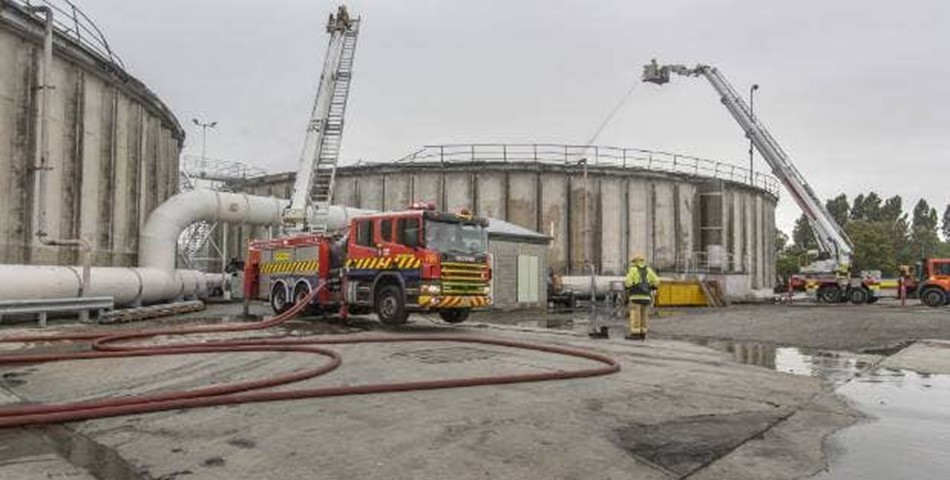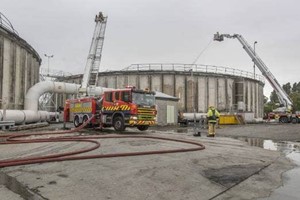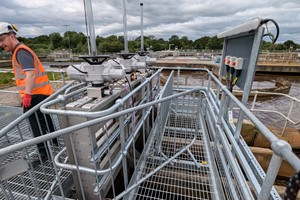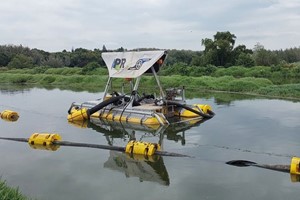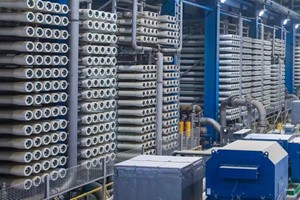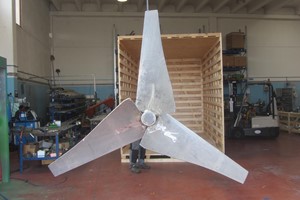Getting inside two fire-damaged filter buildings at a Christchurch wastewater treatment plant will be “challenging”, authorities say, as hot spots remain inside the damaged filter – which is covered by burnt and melted roof debris.
The city council, which owns and operate the plant, is now planning to install a sprinkler system over the damaged building, which it says will help reduce a lingering smell being produced by the filter.
The large blaze at the wastewater plant broke out just after 3pm on Monday.
It destroyed the roofs of two buildings which each housed a trickling filter, one part of the complex wastewater treatment process.
Some nearby residents were evacuated at the time and a public health warning was issued due to a large pall of black smoke that was sent billowing across the city.
Officials have warned a “strong smell” may linger for some time.
The two damaged filters are now being bypassed in the treatment process – and the true effect on the cleanliness of treated wastewater being pumped into the ocean may not be known for over a fortnight.
This is because it takes 20 days for wastewater to make its way through the plant.
Helen Beaumont, head of three waters and waste at Christchurch City Council, said the council was “assessing options” for getting into the filter buildings.
A complete inspection can only happen once hot spots have been dampened down and most, if not all, of the “material” inside the filters is removed.
“This is going to a challenging logistical exercise,” Beaumont said.
Only visual inspections of the damage have taken place so far. Beaumont said these have confirmed there is no immediate risk of the filter buildings collapsing.
What remains of the burnt and melted roofs has fallen into the buildings and is now resting on top of a six-metre thick “media” – a key part of the filter, Beaumont said.
This “media”, made of plastic in a honeycomb design, is where slime grows.
Wastewater is spread over the top of it by large rotating arms. The wastewater then trickles down through it, going over the slime – which is how the wastewater is treated.
“There are still hot spots deeper within [this] media,” Beaumont said, though she was unsure how damaged the media itself was.
Beaumont earlier suspected the rotating arms above the media would be “severely damaged” and would likely need to be replaced.
Beaumont has not speculated on the cost of replacing the filters, or how long it may take.
Despite the damage, the wider wastewater plant in Bromley is still running. Residents do not need to change any habits, such as flushing toilets.
The two damaged filters are being bypassed in the treatment process and Beaumont said the quality of the wastewater presently remained “typical of normal operations”.
The council has a valid consent for discharging wastewater, which is monitored by Environment Canterbury (ECan).
Under the consent, the council has to monitor several parts of the wastewater process, including water quality of the eventual ocean discharge.
“We are not in a position to say how different the discharge may become as we are still assessing the condition of damaged infrastructure,” Beaumont said.
The council has assured ECan it “will make every effort” to comply with its consent, she said.
Council engineers are still trying to figure out the best way to treat wastewater without the two damaged filters.
The council has employed an independent investigator to work with WorkSafe and Fire and Emergency NZ. The cause of the fire remains unknown.
Contractors were refurbishing the roof of one of the filter buildings, and had been doing so for a number of weeks when the fire broke out.
Steven Walton



